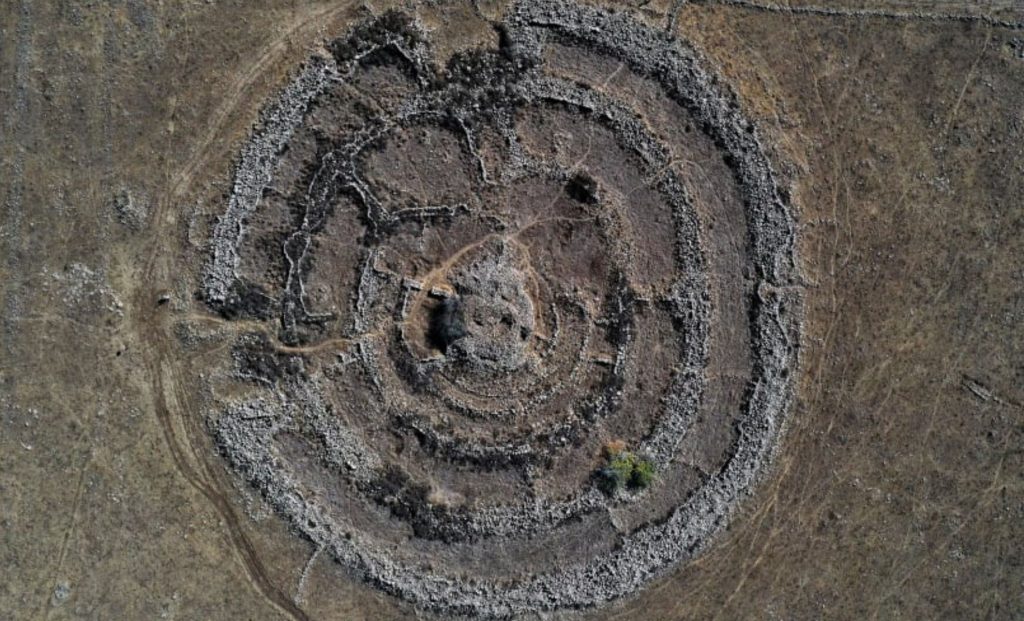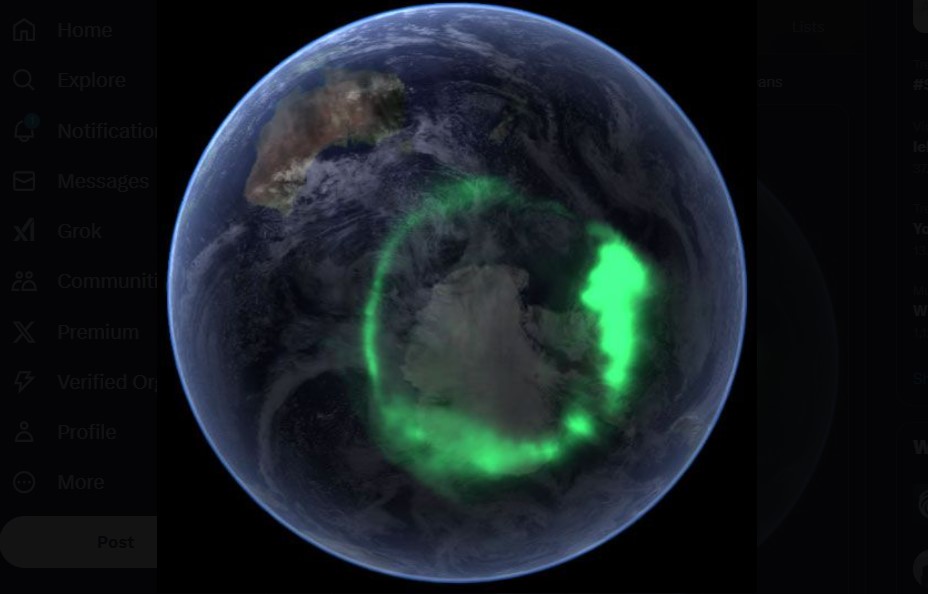Rujm el-Hiri: The Shocking Truth About the Site Once Thought to Be an Astronomical Observatory – The Daily Galaxy –Great Discoveries Channel

Once thought to be an ancient astronomical observatory, the enigmatic Rujm el-Hiri in the Golan Heights is now revealed to have a different purpose entirely. New research challenges old assumptions and sheds light on the site’s true origins.For decades, the ancient site of Rujm el-Hiri, often dubbed the Israeli Stonehenge, has captivated archaeologists and historians. This Bronze Age structure, located in the Golan Heights, is a sprawling complex of concentric stone circles spanning 160 meters in diameter and rising up to 2.4 meters in height. Known as “Gilgal Refaim” in Hebrew, meaning “Wheel of Giants,” the site has long been considered an astronomical observatory due to its intricate alignments and mysterious design. However, groundbreaking research conducted by teams from Tel Aviv University and Ben-Gurion University has upended this theory, offering a fresh perspective on its origins and use.The study, recently published in the journal Remote Sensing, combines geomagnetic data, tectonic analysis, and advanced imaging techniques. Researchers concluded that shifts in the region’s geological landscape have altered the site’s original alignment, rendering it ineffective for celestial observations. This discovery challenges previous interpretations and raises new questions about the site’s true purpose.Central to the study is the region’s tectonic history. The Golan Heights sits atop a dynamic geological zone that has experienced tectonic movements for over 150 million years. These shifts, occurring at an average rate of 8 to 15 millimeters annually, have significantly impacted the orientation of Rujm el-Hiri. As a result, the site’s radial walls and entrances no longer align with astronomical events such as solstices and equinoxes, as they might have during its construction between 2500 and 3500 BCE.Using a combination of satellite imagery, geomagnetic mapping, and soil analysis, researchers reconstructed the site’s original orientation. Their findings revealed that its current configuration does not match the positions of celestial bodies as they appeared during the Bronze Age. This misalignment strongly suggests that the site was never designed for precise astronomical observations, as previously believed.Rujm el-Hiri is not an isolated monument but part of a broader archaeological tapestry in the Golan Heights. Surrounding the main structure, researchers identified additional features, including smaller circular enclosures, burial mounds (known as tumuli), and stone walls. These elements suggest a multi-purpose complex that may have served as a communal, agricultural, or ceremonial hub.The tumuli, in particular, are significant. These stone mounds, often used for burials, are scattered throughout the area, hinting at the site’s possible role as a sacred or ritualistic space. Furthermore, the discovery of thick stone walls and enclosures ranging from 40 to 90 meters in diameter supports the idea that the site may have also been used for pastoral or agricultural activities.This broader context positions Rujm el-Hiri within a network of monumental structures found across the Mediterranean during the Chalcolithic and Early Bronze Age periods. Similarities in design, such as concentric circles and radial walls, suggest cultural connections and shared architectural practices among ancient societies of the region.The study of Rujm el-Hiri exemplifies how modern technology is reshaping archaeological research. The use of remote sensing, satellite imagery, and geomagnetic analysis has allowed scientists to uncover details that were previously inaccessible. These tools have not only revealed the impact of tectonic shifts but also provided a comprehensive view of the site’s layout and its relationship to the surrounding landscape.Remote sensing, in particular, has proven invaluable. By analyzing satellite images covering a 30-kilometer radius around the site, researchers documented numerous previously unknown archaeological features. These include additional circular structures, pathways, and remnants of ancient agricultural systems. This technology enables archaeologists to view sites in their broader environmental and historical contexts, offering insights that ground-level excavations often cannot provide.With the astronomical observatory theory now largely discredited, scholars are exploring alternative explanations for Rujm el-Hiri’s purpose. One possibility is that the site functioned as a ceremonial center, hosting rituals and gatherings for the local Bronze Age community. Its central location and monumental scale suggest that it held significant social or spiritual importance.Another hypothesis points to its potential role in agricultural or pastoral activities. The presence of stone enclosures and walls could indicate areas for livestock or crop storage. The tumuli may have served dual purposes as burial sites and markers for territorial boundaries or resource management.The site’s symbolic value also cannot be ignored. The intricate design and sheer effort required to construct Rujm el-Hiri reflect a society with advanced organizational capabilities and a deep connection to the land. Whether used for ceremonies, practical purposes, or both, the site stands as a testament to the ingenuity and complexity of its creators.Got a reaction? Share your thoughts in the commentsEnjoyed this article? Subscribe to our free newsletter for engaging stories, exclusive content, and the latest news.Well, duh. Of course ancient sites aren’t going to be in the same positions as when they were built. I suspect the same goes for Stonehenge and the pyramids, but archaeologists don’t want to admit it.Comment Save my name, email, and website in this browser for the next time I comment.
© 2024 | Daily Galaxy | All rights reserved
Source: https://dailygalaxy.com/2025/01/rujm-el-hiri-astronomical-observatory/





